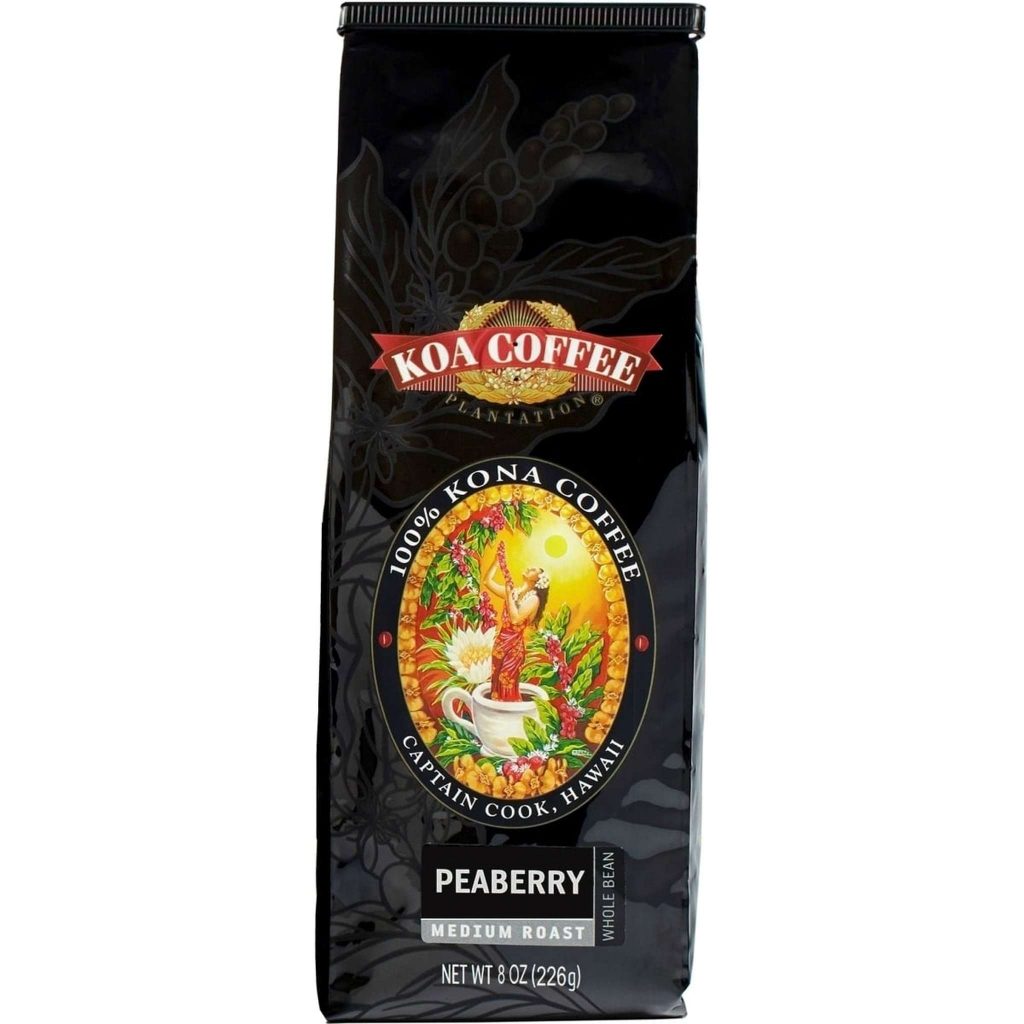While shopping around for coffee, you may have seen one particularly expensive kind of coffee called Kona coffee. So what is Kona coffee, and what makes it so special? Learn more here.
What is Kona coffee, anyway?
Kona coffee refers to a type of arabica coffee grown on the slopes of the Hualalai and Mauna Loa volcanoes on the Big Island in Hawaii. The rich volcanic soil and the weather conditions in that region result in really great-tasting coffee that you can’t find anywhere else.
Remember: Kona coffee is only from Hualalai and Mauna Loa, the Kona coffee belt. The Big Island is known for other coffees, but those are not Kona coffee.
[toc]
The history of Kona Coffee: How did coffee end up in Hawaii?
Hawaii is a very isolated island in the Pacific ocean, so one may wonder how coffee got to Hawaii in the first place!
Coffee history buffs will know that coffee originated in Yemen and Ethiopia, and it was slowly exported to the rest of the world and cultivated in other places.
The history of coffee in Hawaii is very interesting. The first attempt to cultivate coffee in Hawaii was actually a failure!
A renowned horticulturalist named don Francisco de Paula Marin was the first person to try to grow coffee in Hawaii. This was back in 1817. He was able to introduce many other species of plants, but his experiment with coffee failed.
The next attempt to bring coffee to Hawaii was a success! A man named Samuel Ruggles was able to grow coffee successfully in 1828, and coffee has been in Hawaii ever since.
Back then, the main crop of Hawaii was sugar, so not much attention was given to coffee. However, coffee persisted over the next century and a half. Enter the 21st century, and nobody has heard of Hawaiian sugar, but everyone knows about Hawaiian Kona coffee!
What makes Kona coffee so great?
The rich volcanic soil in which Kona coffee is grown make it very special. The combination of the soil and the weather create ideal conditions for a very unique coffee bean.
The slopes receive just the right amount of sunshine year-round. Mixed with good cloud cover, this results in ideal exposure to light. Temperatures are in the perfect range between 55 to 70 degrees F.
By nature, volcanic soil is at an altitude. Altitude makes a huge difference in coffee beans, and the specific elevations of Kona coffee growing areas result in a very balanced taste.
Coffee also needs water, but just the right amount! Too much rain can block out the sun, and too little rain can parch the soil.
The mountainside slopes also provide for excellent soil drainage, as coffee roots shouldn’t stand in water for too long.
What makes Kona coffee so expensive?
Volcanica Coffee’s Hawaiian Kona coffee sells for over $100 a bag. Why is Kona coffee so expensive?
Well, the main reason is that Kona coffee is grown in a first world country! First world countries have largely service economies, which means there is comparatively less manufacturing and production.
Any manufacturing and production tends to be more expensive!
Because coffee picking is done mostly by hand, the cost of labor really adds up.
Kona coffee farms have a lot more overheads than farms in other coutnries.
For example, a farm worker in Hawaii gets paid a lot more than a farm worker somewhere else, and thats just the cost of labor. Add to that the cost of land, fertilizers, maintenance, fuel, taxes, and the like, and you’ll end up with a cost of around $50 per pound of Kona coffee.
Add to that the fact that Kona coffee is only grown on the slopes of the two volcanoes, and you’ve got scarcity thrown into the mix, which further drives the price up.
How to know you’re getting real Kona coffee
The best place to get Kona coffee is directly from the local plantations or from stores on the Big Island. Of course, it’s not possible to go to Hawaii every time you want to get a cup, so you’ll need to get your Kona coffee from elsewhere.
Volcanica Coffee is a very reputed retailer of estate coffees and they carry the real deal. Check out their Kona coffee here.
Thanks to the folklore and mystique surrounding Kona coffee, a lot of companies have jumped on the bandwagon and attempt to label their coffees as something related to Kona.
The truth is, very few coffees are actually Kona! Companies use clever marketing tricks to make you think their stuff is Kona when it is really not.
You need to be very careful when reading the label to see if you’re getting real Kona coffee or not.
The law in Hawaii states that the percentage of Kona coffee must be printed on the label of the coffee bag/packaging. So if you find a bag saying “100% Kona Coffee”, you’ll know it’s the genuine stuff.
Kona written in any other way will not be true Kona coffee.
Here are some of the weird labels you can find:
- Kona Roast: In reality, there’s no such thing as Kona roast. There’s no regulation on writing Kona roast on your coffee, so you could even repackage cheap instant coffee and sell it as “Kona Roast.” Avoid at all costs.
- Kona Style: Works similar to Kona Roast. There’s no such thing as Kona Style, so unless there is a percentage stated on the packaging, avoid it.
- Kona Blend: If the words Kona and blend appear together, the law states it must be at least 10% Kona coffee.
- 100% Kona Coffee: this is what you want to look for.
What about Peaberry coffee?
Sometimes you’ll also come across something called Kona Peaberry coffee. Peaberry coffee is even more expensive than the regular Kona coffee, so what makes Peaberry so special?
Coffee beans usually grow as two beans in a single fruit. Since the space inside the fruit is limited, regular coffee beans are round on one side and flat towards the center.
Sometimes, though, only one seed is fertilized, resulting in a single bean instead of two. This bean has more room to grow, so it’s bigger and has a rounder shape.
The roasting process for Peaberry beans is slightly different from that of normal coffee beans, so normal coffee beans and peaberry coffee beans are separated before roasting.
Some say that Peaberry tastes better because they roast more efficiently.
There’s no doubt that Peaberry has a taste distinct from regular coffee, so if you’re up for splurging even a little more, consider picking up some Peaberry Kona coffee beans!
Is Kona coffee the only coffee from the Big Island?
The Big Island of Hawaii is best known for Kona coffee, but that’s not the only coffee Hawaii is known for.
The other kinds of coffee beans you can find in Hawaii are grown in Ka’u and Puna on the Hamakua coast.
Some of the other Hawaiian islands also have coffee plantations, and each island has their own taste.
Kona coffee is much more popular than other Hawaiian coffee, so the other coffees can sometimes be picked up for much cheaper.
A simple search for Hawiian coffee will yield a lot of results. Remember: if you’re looking for real Kona coffee beans, you need to buy 100% Kona coffee.
If your budget does not allow for expensive coffee, consider Kona blends.
Now for the other Hawaiian coffees:
Ka’u coffee
Ka’u is one of the newest coffees to gain popularity. It has consistently been winning awards and has been chosen as a favorite coffee by the best baristas in the world.
Ka’u coffee has a floral and bright taste.
Puna coffee
Puna coffee is one of the oldest types of coffee in Hawaii. Coffee cultivation paused for a while as sugarcane boomed, but it’s slowly reclaiming the tops pot.
Puna coffee is very nutty and full-bodied, and medium roasts are the best ways to enjoy it.
Hamakua coffee
The Hamakua region consists of mostly small farms. Hamakua coffee has a very smooth and rich flavor.
Where to find Kona coffee
Volcanica Extra Fancy Kona Coffee
If you want the real cream of the crop, Volcanica’s Extra Fancy Kona coffee is the absolute best you can find.
Koa Coffee
Koa Coffee is one of the best places that sells Kona coffee. They also have other Hawiian coffees if you’re interested.
Amazon
If you want a Kona blend for cheaper:
Conclusion
You now know what makes Kona coffee so special. Kona coffee is a truly unforgettable experience, and while it’s very expensive, it’s the perfect coffee to treat yourself or that special someone in your life who is a coffee lover.
As far as specialty coffee goes, Kona easily takes one of the top spots. We’ve also featured Hawaiian Kona coffee in our list of the best coffee beans.






